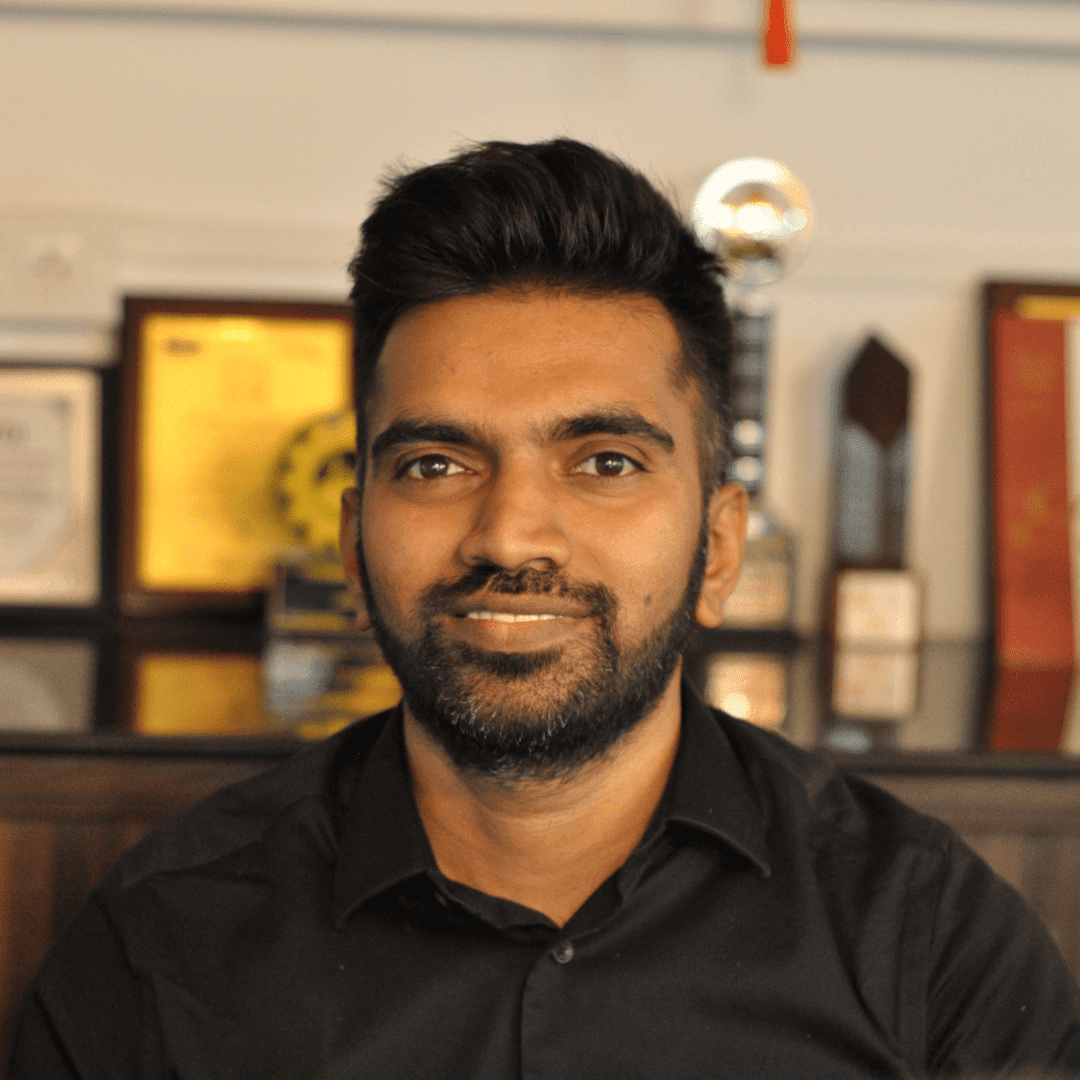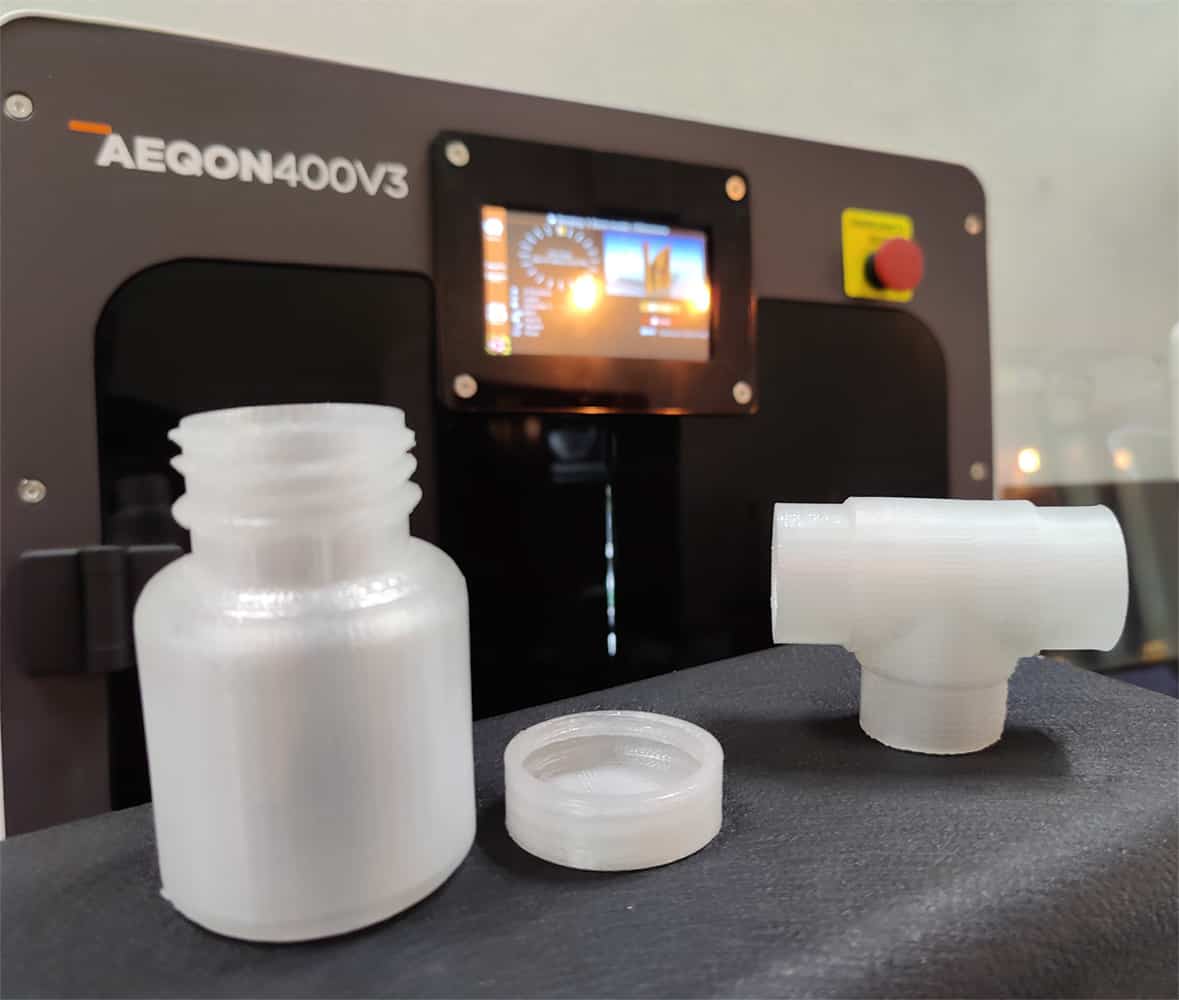 Divide By Zero recently added polypropylene in their high-performance 3d printing portfolio.
Divide By Zero recently added polypropylene in their high-performance 3d printing portfolio.
Aditya Chandavarkar, Co-Founder, AM Chronicle caught up with Swapnil Sansare, CEO & Founder, Divide By Zero Technologies. Swapnil is a robotics expert turned into entrepreneur. He has rich experience in automation and machine design. In this conversation Swapnil shared his journey at Divide By Zero, some of their recent achievements and future plans.
Aditya Chandavarkar: Before we dive into the specifics, we would be keen to know how the journey has been at Divide By Zero Technologies so far.
Swapnil Sansare: Our journey began with launching our first machine at a expo in November 2013, where we attracted lot of interest. However, there was a challenge, many clients needed changes in the specifications and the machines needed modifications. We worked on these elements and relaunched our machine in 2014. We called it the Accucraft i250 and it was our first-ever 3D printer to be exported. We shipped a few units to Dubai and also enjoyed a nice chunk of press coverage. With the launch of India’s first-ever large-format 3D printer series – AION500, we took our stand with the big leagues and there was no looking back from that moment on.
Currently, we are the first homegrown high-speed polymer 3D printer manufacturer to hold two
technological patents from India and the United States of America. Besides exporting to
Malaysia, Sweden, Germany, and UAE we are the first to export high-speed printers to the
United States.
AC: How has your organisation overcome the challenges created by the Pandemic and what have been your recent successes ?
SS: 2020 has been a challenging year for all of us. One year back, just a week after the
onset of the global lockdown, we had no idea how things would go with a total economic shutdown. However to our advantage we have learned a lot in making our businesses more robust and resilient. We grew strong by contributing and collaborating, and took great pride in helping out our frontline health workers. More than 1.75 lakhs of 3D printed and 3d print assisted medical equipment ranging from face shields, disinfection boxes, and UV robots were delivered in a short span of 4 months.
In this past year we made our network stronger by talking about the technology via webinars using digital technology. Our core team stepped up and took ownership of every account possible in delivering seamless service to all our customers even during the darkest of days.
One year later, we have turned back strong, implementing the most resilient ways
possible. Besides, within two months after receiving our technology patent from India and the
United States, we dispatched India’s first high-speed 3D printer to Houston, Texas.
AC: Are there any new materials you are working on or introducing on your printers?
SS: We are catering to client needs and developing applications with materials like polypropylene,
Carbon-fibre Nylon, Polycarbonate, Carbon-fibre ABS, PCPBT, GF-PP on our machine
platforms. We are looking at launching machining-grade materials that can be equipped with our yet to launch hybrid systems to obtain super finished components for end use such as PMMA, polycarbonate, CF ABS.
We would like specially mention the that we have recently added polypropylene to our materials portfolio. Polypropylene is highly resistant against strong impact and abrasion forces. This along with DBZ’s 5X faster high-speed FFF technology adds huge benefits in delivering complex, high-strength durable end use 3d printed components
AC: What are the benefits that use of Polypropylene brings to 3D Printing?
Owing to its high toughness and fatigue resistant property, 3D printed PP parts find
applications in the medical industry. For example – 3D printing prosthetic sockets
and braces with PP is a cost-efficient method that can withstand bumps and bruises
without component breakage. Being FDA approved, this grade of Polypropylene finds limitless applications in the food and packaging industry for low-cost product prototyping and mass customization.
3D printed polypropylene parts can withstand higher stress and higher loads owing to its
larger tendency to resist deformation compared to PLA and ABS. Almost all industrial and engineering-grade 3D printing materials are sensitive to the air moisture humidification process. Consequently, one needs to invest huge cash for active air moisture removal from all filaments. This adds cash-burden on their book of accounts. On the other hand, PP is not sensitive to moisture and needs no such auxiliary process to keep its material properties intact.
Combining two of its best properties – high breaking strength and lowest density, one
can 3D print high-strength, light-weight end-use applications that need mass
customizations. Being completely skin-friendly, 3D printing with polypropylene can assist the medical industry in manufacturing on-demand, low-cost, customised 3D printed prosthetic parts. This would help healthcare establishments to deliver medical assistance to the poor at
the lowest cost possible.
PP is entirely environment-friendly and 3D printed PP parts can be recycled making is a more sustainable material
4. How does the roadmap for Divide By Zero look from here on?
Currently, we are working on a new technology wherein we are can combine the advantage of both additive and subtractive manufacturing under one framework. This new technology will give surface finish like CNC machining at the lowest cost of FFF technology. That being said, this will open a whole new ecosystem of advanced manufacturing, especially in small-batch manufacturing, where businesses will stay independent of high-cost
SLS, SLA, and other sintering technologies.
We are also working on many other advanced manufacturing technologies and catering to on
demand manufacturing requirements of our customers with high strength, high speed and low
cost 3D printing technology. There are many new product launches from Divide by Zero lined up in 2022.
Besides, we are looking ahead to work with dynamic channel partners, both nationally and
internationally who can come in synergy with us wherein we will focus on product innovations
and they can service our customers on-demand.



